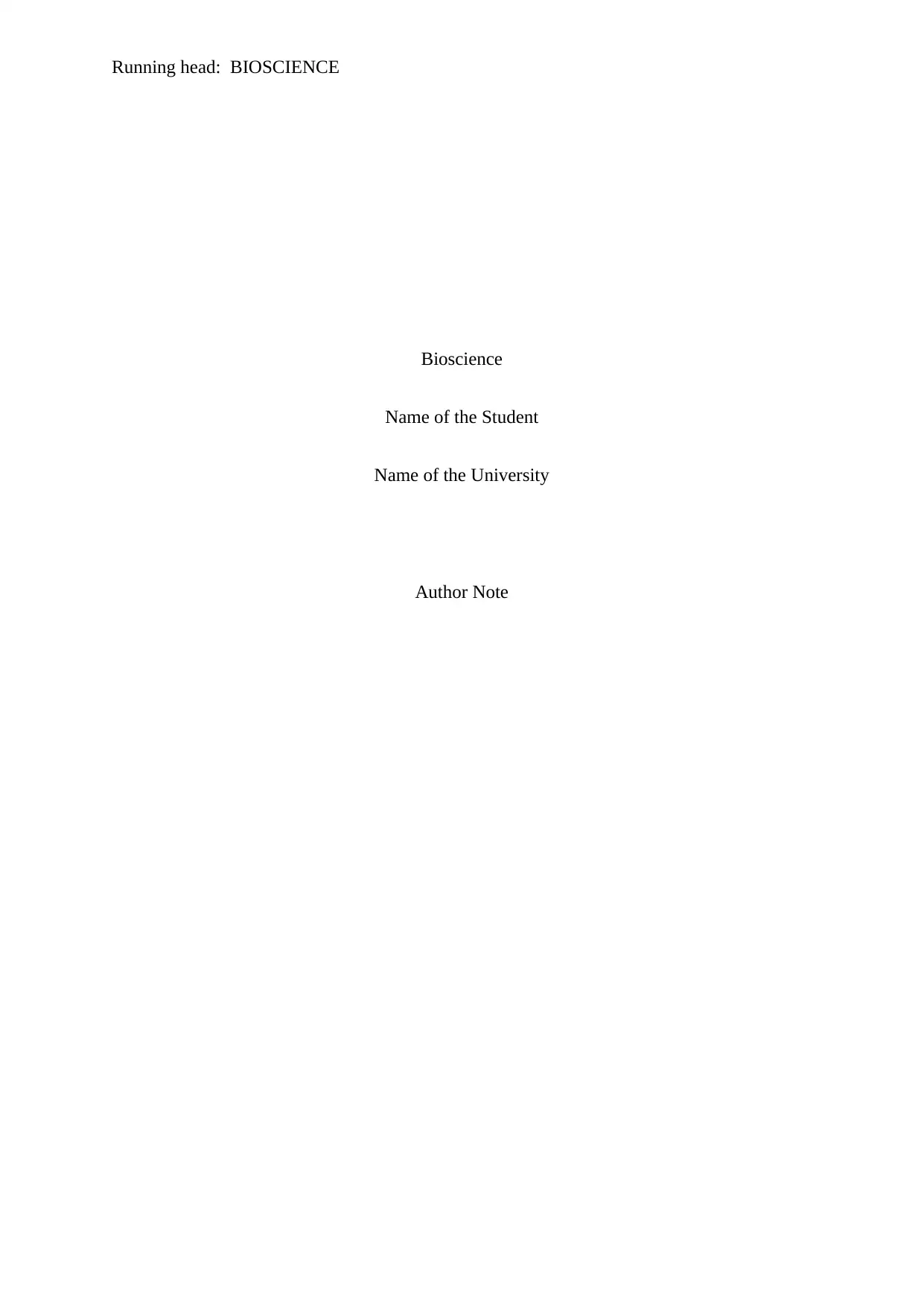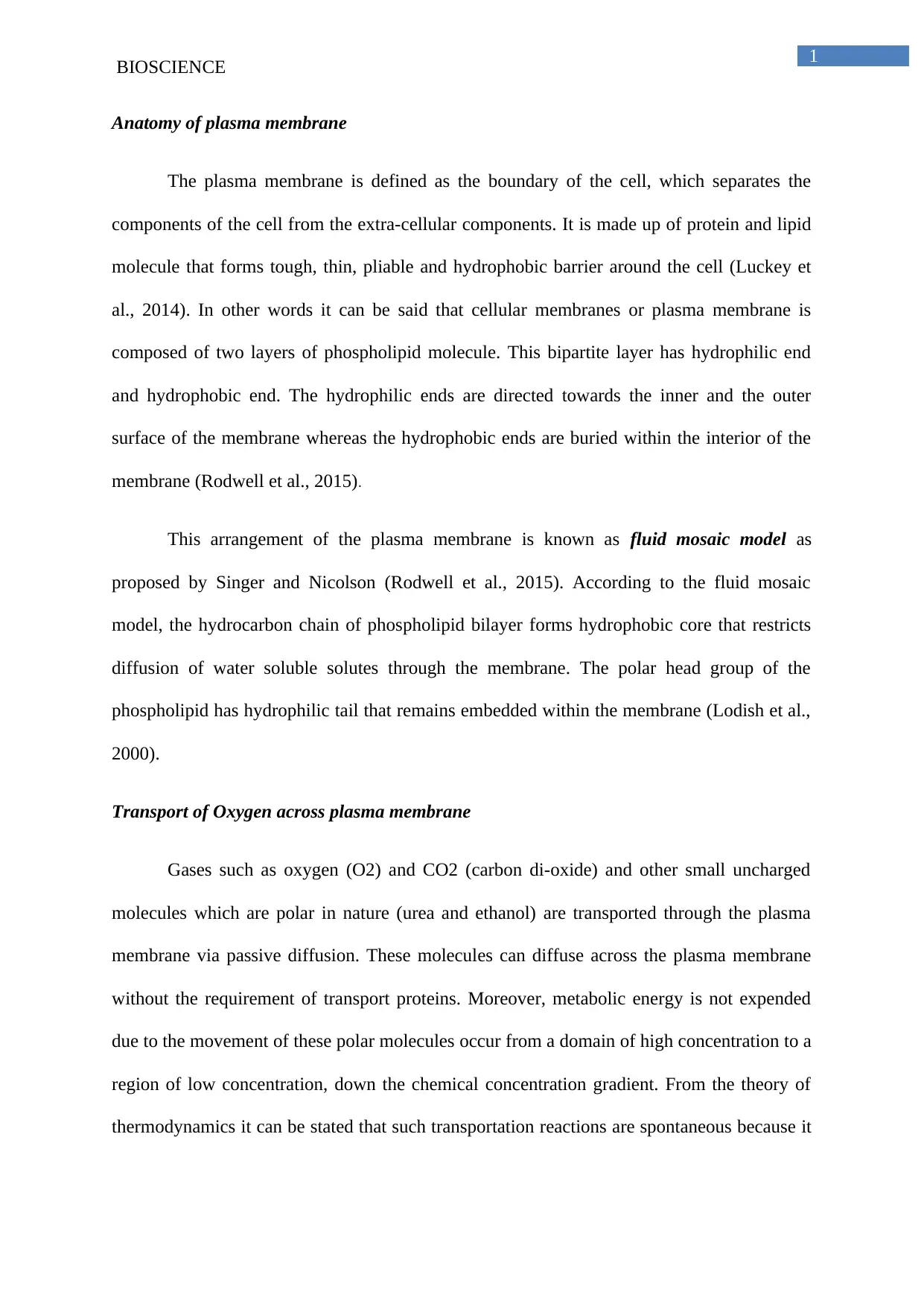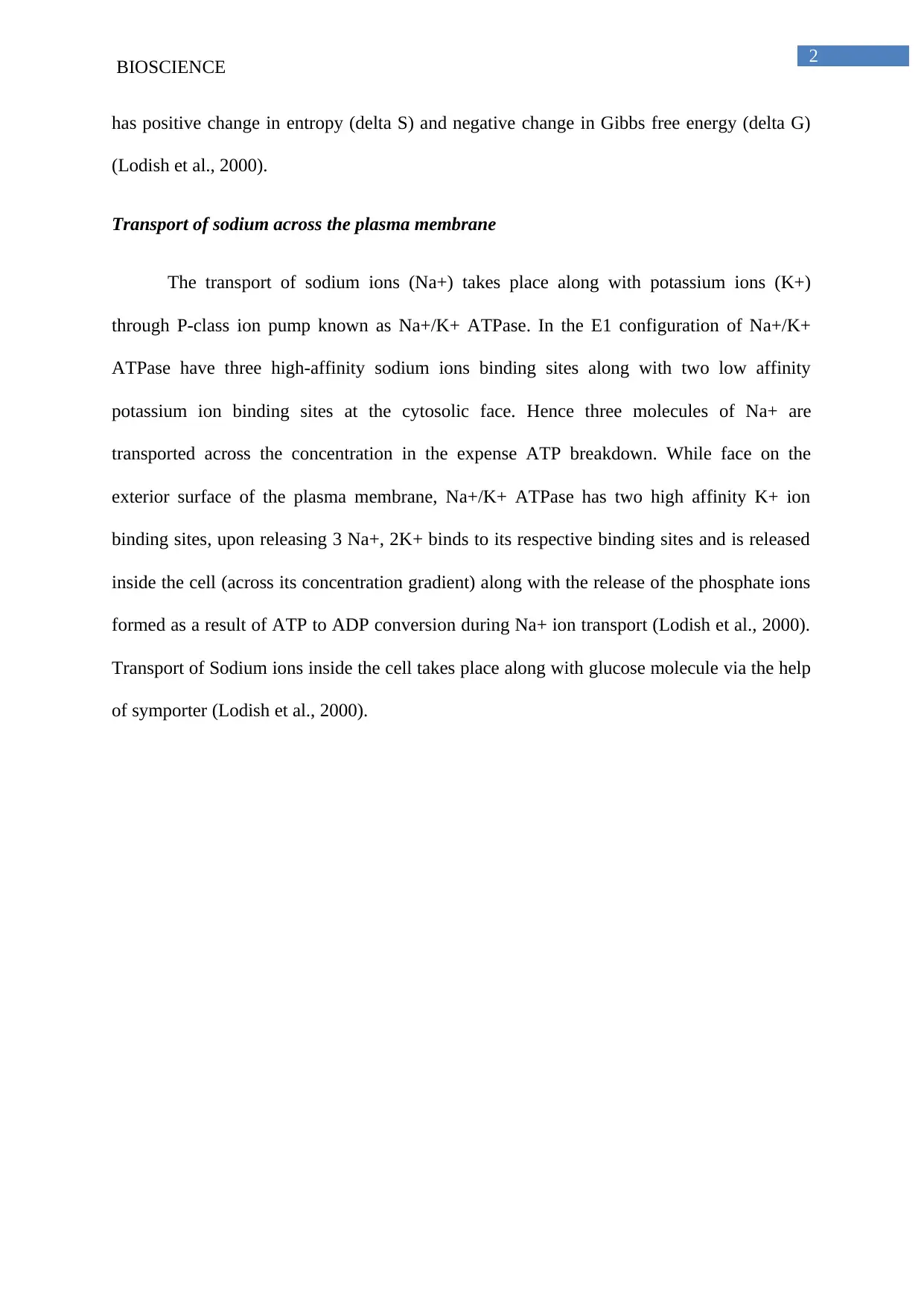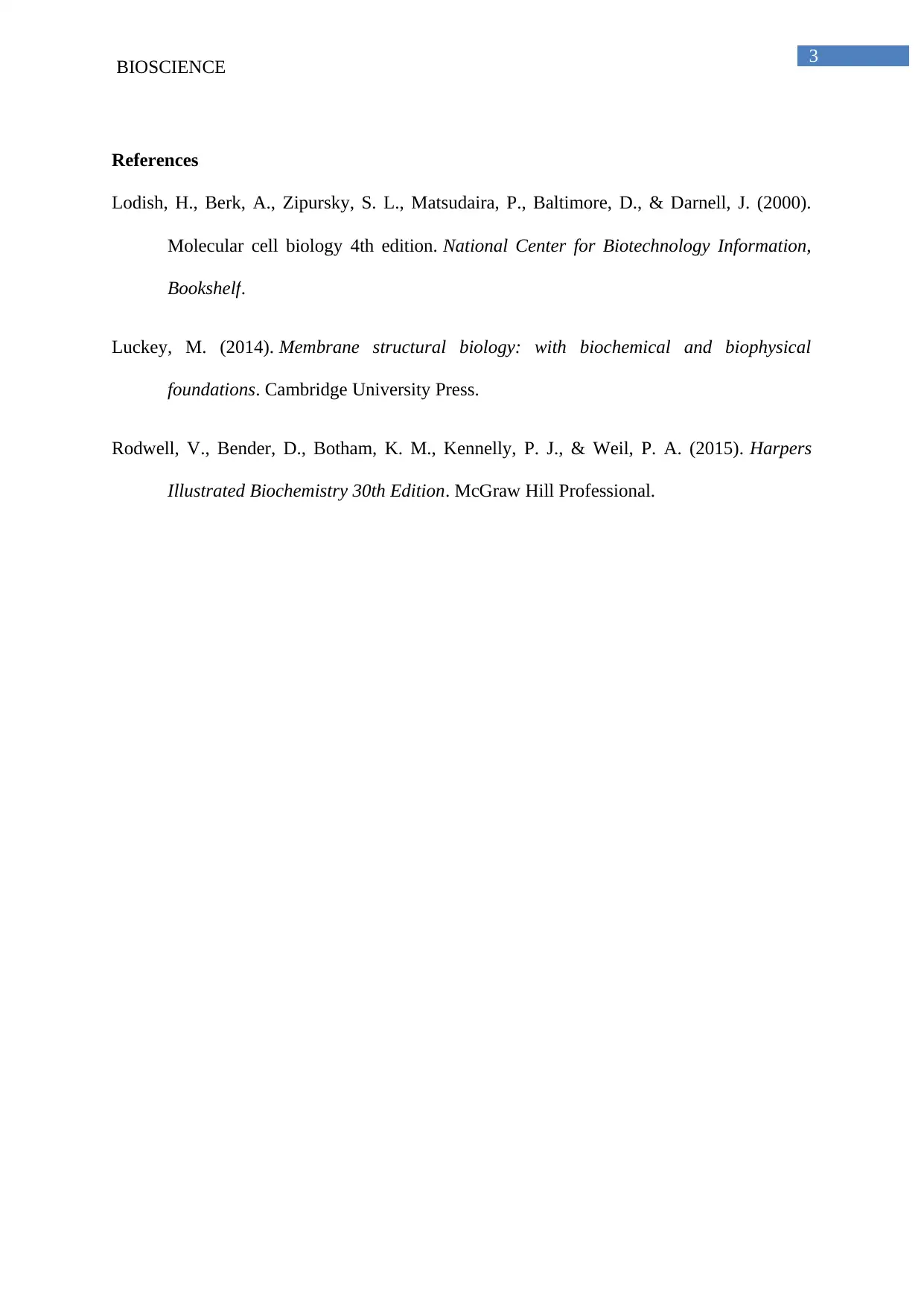Bioscience Assignment: Analysis of Plasma Membrane and Transportation
VerifiedAdded on 2023/06/14
|4
|644
|419
Report
AI Summary
This report provides a detailed analysis of the plasma membrane, focusing on its structure and the mechanisms by which oxygen and sodium ions are transported across it. The plasma membrane, which separates the cell's components from the extracellular environment, is composed of a lipid bilayer with hydrophilic and hydrophobic ends, arranged according to the fluid mosaic model. Oxygen transport occurs via passive diffusion, moving from high to low concentration areas without requiring transport proteins or metabolic energy. Sodium transport, however, is facilitated by the Na+/K+ ATPase, a P-class ion pump, which moves sodium ions against their concentration gradient using ATP. Additionally, sodium ions are transported into the cell along with glucose molecules via symporters. The report references key works in molecular cell biology and membrane structural biology to support its explanations.
1 out of 4











![[object Object]](/_next/static/media/star-bottom.7253800d.svg)